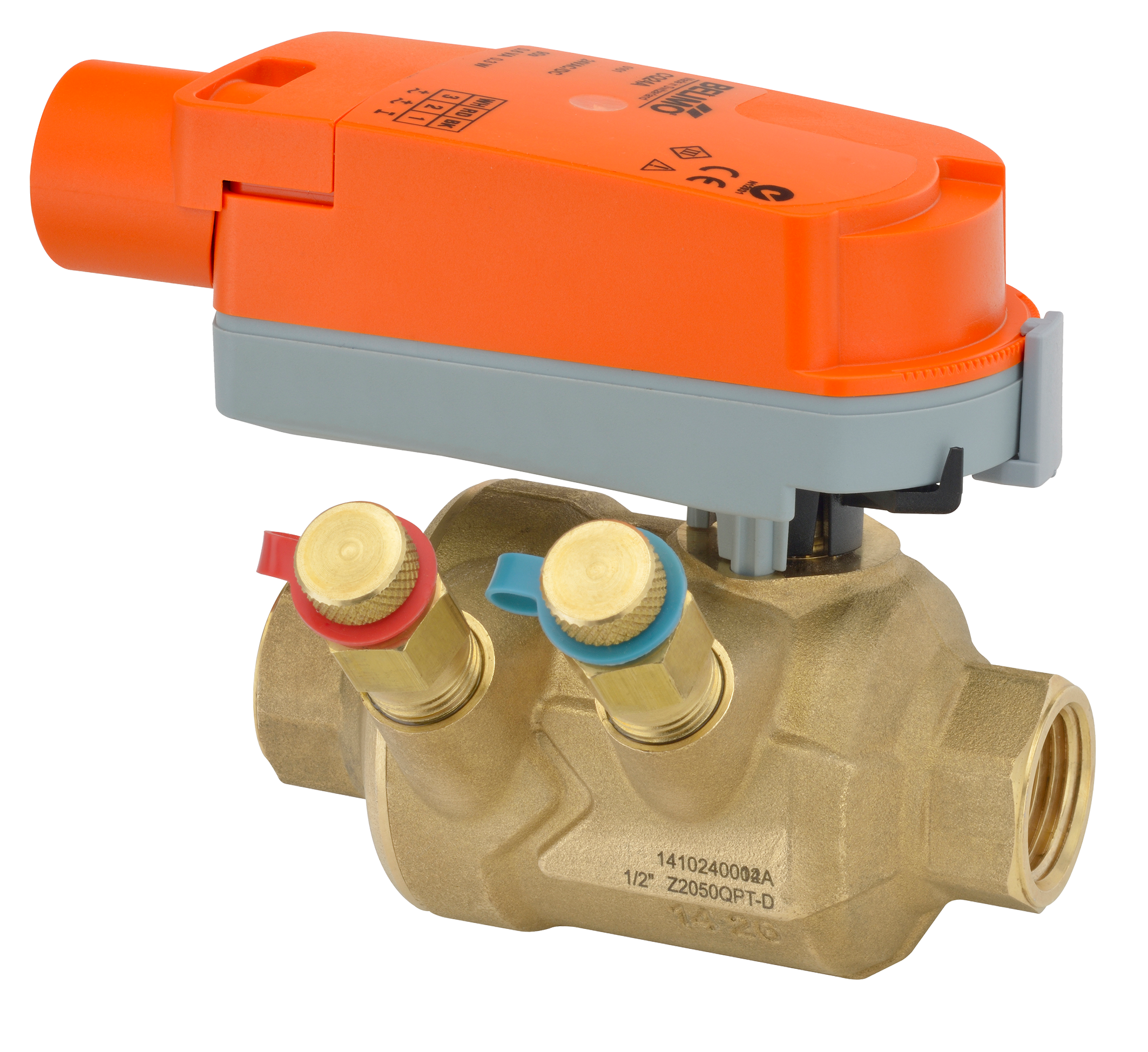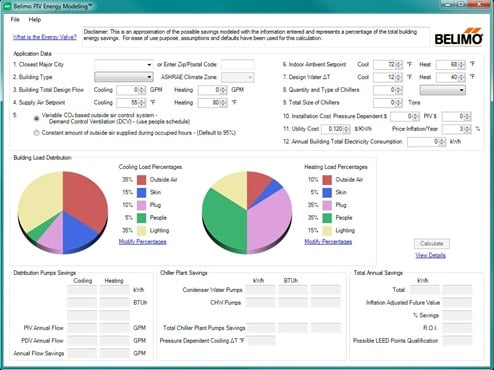How to Model Energy Savings with Pressure Independent Valves
The pressure independent control technology has matured over the years and is accepted as a proven application for optimizing hydronic system delta T, enhancing system performance and reducing energy cost. Pressure independent valves offer precise hydronic flow control resulting in improved system efficiency and control for heating and cooling applications. The primary purpose of pressure independent control valves in a HVAC system is to minimize flow through the coil in an air handler while maintaining process variable set point control (coil discharge air temperature). Hydronic system performance has varied from constant volume to variable volume with pressure independent flow control.
 Installing pressure independent control valves instead of pressure dependent two-way control valves typically used in variable flow systems is the best of both worlds. The pressure independent valve combines the functionality of a control valve and a pressure regulating valve, creating ONE precise product which is unaffected by pressure variations in a system. The high rangeability provides enhanced control resulting in elevated delta T performance and reduced flow to serve system loads. This cost effective design provides a constant flow – at each degree of ball opening – giving unparalleled performance in your HVAC system.
Installing pressure independent control valves instead of pressure dependent two-way control valves typically used in variable flow systems is the best of both worlds. The pressure independent valve combines the functionality of a control valve and a pressure regulating valve, creating ONE precise product which is unaffected by pressure variations in a system. The high rangeability provides enhanced control resulting in elevated delta T performance and reduced flow to serve system loads. This cost effective design provides a constant flow – at each degree of ball opening – giving unparalleled performance in your HVAC system.
 Calculate the energy savings when using pressure independent valves with Belimo’s PIV Energy Modeling tool. The PIV Energy Modeling tool is a Mircrosoft Windows® based application tool offered by Belimo – free of charge. The user simply enters a minimum amount of variables and is able to obtain a quick comparison of energy usage between the two types of valves. Even though the software requires minimum user entries, the calculations are very complex. It uses a set of hourly calculations in the background to obtain the different building HVAC load with predefined building types along with the city weather data and climate zone. The calculations structure complies with ASHRAE 90.1-2010 Appendix G regarding requirements for simulation programs. The program even provides the calculation tables so that the user can use the modeling as part of an Exceptional Calculation Method.
Calculate the energy savings when using pressure independent valves with Belimo’s PIV Energy Modeling tool. The PIV Energy Modeling tool is a Mircrosoft Windows® based application tool offered by Belimo – free of charge. The user simply enters a minimum amount of variables and is able to obtain a quick comparison of energy usage between the two types of valves. Even though the software requires minimum user entries, the calculations are very complex. It uses a set of hourly calculations in the background to obtain the different building HVAC load with predefined building types along with the city weather data and climate zone. The calculations structure complies with ASHRAE 90.1-2010 Appendix G regarding requirements for simulation programs. The program even provides the calculation tables so that the user can use the modeling as part of an Exceptional Calculation Method.
The PIV Energy Modeling tool can be accessed online at www.belimo.com located in the top page navigation under: Sizing/Selection Tool.
Download the PIV Energy Modeling Tool and the Installation Guide
